According provided by Nikon 1 AW1 camera many thanks to the official representative of Nikon in Ukraine. I prepared this review together with Andrey Kondratenko.
Nikon 1 AW1 is an unusual mirrorless system camera of the Nikon 1 family. First of all, Nikon 1 AW1 is interesting because it:
- Waterproof. With it, you can swim without any problems, lower it to a depth of no more than 15 meters, wet it in the rain and not worry that something will happen to the camera. However, water resistance (water resistance and moisture resistance) is only guaranteed with lenses of the 'Nikon 1 Nikkor AW' class. At the end of the review, the actual experience of using the camera for underwater photography and the precautions to be taken are described.
- Frost resistant. It is stated that the camera operates in temperature conditions from -10 to + 40 ° C. No need to worry with her about frost on the street. But even at dear Nikon D4s temperature range is only from 0 to + 40 ° C.
- Shockproof... The camera claims to withstand a 2 meter drop! However, shock resistance is only guaranteed when the built-in frog flash is in parking mode and only when shock resistant 'Nikon 1 Nikkor AW' lenses are used. The instructions say that when testing the camera for shock resistance, a wooden surface 5 cm thick was used. Whether the camera is friendly with asphalt and concrete is unknown to science :).
- Dustproof. Nikon 1 AW1 is not afraid of dust and dirt :).
It turns out that the Nikon 1 AW1 is not afraid of water, moisture, frost, dust, dirt, falls, or bumps. For a traveler or a person engaged in outdoor activities, this is an irreplaceable find. Personally, I highly appreciate the high level of protection of the camera from external factors.
By the way, the camera that I reviewed has a lot of abrasions on its body, a bent front part of the lens, traces of use in an aggressive environment. I didn’t torture the camera, but from its “scars” you can understand that it has seen quite a few “reviewers” in her lifetime who were not so supportive of her.
The camera assembly is top notch. The Nikon 1 AW1 is very, very pleasant to the touch, the buttons are pressed very smoothly and softly, which gives moral satisfaction. The 'scars' on the camera body show that its body is made entirely of metal.
Nikon 1 AW1 uses a dedicated 'Nikon waterproof 1 mount' (Nikon 1 waterproof). This mount is compatible with both 'Nikon 1 Nikkor AW' lenses and regular 'Nikon 1 Nikkor' lenses. At the time of this writing, there were only 2 waterproof and shockproof lenses:
- Nikon 1 Nikkor AW 11-27.5mm 1: 3.5-5.6 ED Aspherical - versatile zoom
- Nikon 1 Nikkor AW 10mm 1: 2.8 - fast wide-angle prime
The camera mount has a special rubber (or silicone) ring that fits snugly on the lens skirt and prevents water and dust from getting on the inside of the camera and lens. To use conventional 'Nikon 1 Nikkor' lenses (without special protection), you need to remove the special black plastic ring from the bayonet cover and install it on the camera mount, and then attach the lens itself to the camera. But protected lenses 'Nikon 1 Nikkor AW' cannot be used with ordinary Nikon 1 cameras (mechanically incompatible due to the protective 'skirt' of the lens).
Spoiler: the camera works only with 'native' Nikon 1 lenses. Make the camera shoot with some vintage lens doesn’t work out in any way. This is the first camera with interchangeable optics, which I can not get to shoot with manual optics, since the Nikon 1 AW1 simply can not do this.
The camera mount is secured with five screws, unlike other Nikon 1 cameras that only have four screws. For safety, to prevent accidental opening of the battery compartment and digital port compartment, the covers of these compartments are equipped with additional 'LOCK' buttons that prevent the covers from being opened accidentally. In general, everything is thought out. The only thing that confuses me a little is the lack of seals in the compartment from which the frog flash jumps out, in addition, the multi-piece mechanical flash suspension makes you worry about it.
Almost all camera control is done through the camera menu - for me this is a living hell. For example, to enable 'A - Aperture Priority' mode, you have to press a bunch of buttons. The camera's menu is quite modest and very easy to understand. While using the Nikon 1 AW1, I noticed that often navigating the camera menus was a little slow, which was unnerving.
Most likely, the Nikon 1 AW1 uses the same image forming matrix as the Nikon 1 J3, Nikon 1 S2 and Nikon 1 V2. Small sensor, with physical dimensions 13.2 mm X 8.8 mm and crop factor 2.7X, packed with 14 megapixels. As a result, at the output you can get the maximum pictures 4608 x 3072. If you indulge panoramic shooting, then you can take pictures and the size of 1536 x 9600.
Nikon 1 AW1 can use ISO values from 160 to 6400 units. What causes the minimum ISO of 160 units is hard to understand. You can manually select only ISO values 160, 200, 400, 800, 1600, 3200, 6400. Three options for the operation of automatic ISO control are available:
- 6400 (160-6400)
- 3200 (160-3200)
- 800 (160-800)
There is no flexible auto-ISO setting, and this is a serious drawback of the camera. And even worse - the camera picks up very long excerpts when using auto ISO.
And the work of the camera at high ISO values is not particularly pleasing - and it's all to blame for the very strong 'noise reduction', which tries to make an image devoid of digital noise, but in the end it 'eats up' the image details. The Nikon 1 AW1's small sensor makes itself felt :(. Still, the image quality is a cut above that of many digital point-and-shoot cameras.
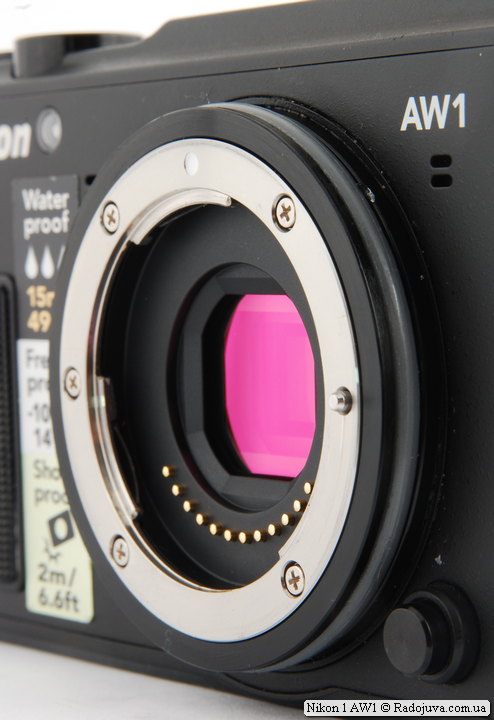
Nikon 1 AW1. The photo shows a gray rubber (or silicone) ring, which fits snugly against the lens and protects the camera from liquid and dust.
Nikon 1 AW1 does not have a mechanical shutter, and therefore during shooting it may not create any noise at all. Minimum excerpt is only 1 / 16.000 of a second. A minimum excerpt flash sync - a measly 1 / 60th of a second. The built-in flash works either in TTL auto mode or in manual mode with manual power setting. The flash can work underwater as well.
The Nikon 1 AW1 has a fairly fast and accurate hybrid focus, which pleased me nicely. There are several different modes for focusing.
You can set single-frame and continuous shooting at 5, 15, 30, or 60 frames per second. For different frame rates frame buffer has a different meaning. The camera has functions that programmatically improve image quality: noise reduction at high ISO sensitivity, noise reduction during long exposureautomatic distortion control and active D-lighting. If all of them are turned off, then it is placed in the buffer:
- 27 shots RAW @ 5fps
- 22 shots RAW @ 15fps
- 20 shots in RAW format at 30 fps
- 20 shots in RAW format at 60 fps
- 31 JPEG L pictures at 5 fps
- 22 still images JPEG L @ 15fps
- 20 pictures in JPEG L format at 30 fps
- 20 pictures in JPEG L format at 60 fps
On the one hand, the buffer is quite capacious, and on the other, when shooting at 60 fps, the camera fizzles out after 300 milliseconds of continuous fast shooting :).
Nikon 1 AW1 can shoot quality video Full HD 1920X1080 60i, sound is recorded using a stereo microphone. You can shoot with the quality of 1920 × 1080 30p or 1280 × 720 60p and 30p.
In addition, you can shoot videos up to three seconds in length with a very high frequency:
- 640 x 240 400 frames per second
- 320 x 120 1.200 frames per second
When playing back, a slowdown effect is obtained. I used this feature in my post about the focusing speed of Nikon non-motorized lenses.
Additionally, you can download the source videos from underwater shooting at this link.
Overall, the Nikon 1 AW1 is functionally very similar to other Nikon 1 cameras.
Here link to the archive with the originals - 276 MB, 19 photos in .NEF format (RAW)
Nikon 1 Nikkor AW 11-27.5mm 1: 3.5-5.6 ED Aspherical
The Nikon 1 AW1 with Nikon 1 Nikkor AW lens is one of two protected lenses for the Nikon 1 AW1 camera. In short, this is a regular 'dark' lens with a 2.5x zoom, the main feature of which is complete protection against water, dust and shocks. Like the Nikon 1 AW1 camera itself, this lens can easily withstand immersion to 15 meters, a fall from a height of up to two meters and work in the cold. The assembly of the lens is at a very good level. The zoom ring is made of metal (namely, metal without a plastic or rubber coating). EGF lens is 30-74 mm. You can buy an additional Nikon HN-N103 lens hood.
The optical design of the lens consists of 8 elements in 6 groups, one of which is made of Nikon ED glass, and one element is aspherical. The front lens is covered with a special protective element. The lens weighs 180 grams and uses light filters with a diameter of 40.5 mm. Nikon 1 Nikkor AW 11-27.5mm 1: 3.5-5.6 has internal zoom and internal focusing. The zoom ring is very wide and comfortable. The lens is deprived of the focusing ring, in order to use manual focus, set the focus mode to 'M' in the camera menu and use the camera controls to control the focusing distance. The MDF is 30 cm. The lens aperture consists of seven blades and closes down to f / 16.

Nikon 1 AW1 with Nikon 1 Nikkor AW 11-27.5mm 1: 3.5-5.6 ED Aspherical lens. Protective bayonet skirt
In terms of image quality, the Nikon 1 Nikkor AW 11-27.5mm 1: 3.5-5.6 is no different from other 'kit' lenses. Personally, I didn’t like the lens flare, usually these lenses are more resistant to backlight.
And one more spoiler: there are no Nikon 1 Nikkor AW lenses with an integrated image stabilizer so far. And, most likely, they may not be.
All lenses for Nikon cameras 1
Fix Lenses:
- Nikon 1 NIKKOR 10mm f / 2.8 (black and silver)
- Nikon 1 NIKKOR AW 10mm f / 2.8 (only black)
- Nikon 1 NIKKOR 18.5mm f / 1.8 (black, silver, white)
- Nikon 1 NIKKOR 32mm f / 1.2 (black, silver)
Zoom lenses
- Nikon 1 NIKKOR VR 6.7-13mm f / 3.5-5.6 (black and silver)
- Nikon 1 NIKKOR VR 10-30mm f / 3.5-5.6 (8 color options)
- Nikon 1 NIKKOR VR 10-30mm f / 3.5-5.6 PD-ZOOM (6 color options)
- Nikon 1 NIKKOR VR 10-100mm f / 4-5.6 (5 color options)
- Nikon 1 NIKKOR VR 10-100mm f / 4.5-5.6 PD-ZOOM (only black)
- Nikon 1 NIKKOR 11-27.5mm f / 3.5-5.6 (6 color options)
- Nikon 1 NIKKOR AW 11-27.5mm f / 3.5-5.6 (black, silver, white)
- Nikon 1 NIKKOR VR 30-110mm f / 3.8-5.6 (8 color options)
- Nikon 1 NIKKOR VR 70-300mm f / 4.5-5.6 N (only black)
All Nikon 1 cameras
- Nikon 1 J1, Nikon 1 J2, Nikon 1 J3, Nikon 1 J4, Nikon 1 J5.
- Nikon 1S1, Nikon 1S2
- Nikon 1 V1, Nikon 1 V2, Nikon 1 V3
- Nikon 1AW1
Prices for Nikon 1 AW1 in popular stores can look at this link, or in the price block below:
Additional useful information from Andrey Kondratenko:
Nikon introduced their first mirrorless camera in September 2013. More than a year has passed, but none of the manufacturers of interchangeable lens cameras have proposed anything like this, nor have they announced it. I must say that Nikon's experiments in the production of moisture / frost protected did not begin a year or even two. Nippon Kogaku KK (now NIKON) introduced its first secure camera in 1963. In fairness, it must be said that the camera developer was originally LA SPIROTECHNIQUE (the famous manufacturer of diving equipment, now better known under the brand AQUA LUNG), which in 1961 introduced its rangefinder Calypso, to the creation of which the famous oceanographer and creator had a direct hand the films of Jacques Cousteau. The camera withstood immersion in water up to 60 meters !!! In 1963, NIKON bought the rights to Calypso and launched its line of waterproof cameras under the NIKONOS brand. Moreover, the original Calypso was equipped with a lens of the French company Berthiot, but NIKON developed its optics, and NIKONOS began to be equipped with NIKKOR lenses. And by the way, in some European countries, NIKONOS cameras were sold under the NIKONOS / Calypso brand for many more years. The first NIKONOS was produced until 1968, after which several series were released. The fourth generation (NIKONOS IV-A) was already available in SLR format. The latest NIKONOS V was introduced in 1984 and was produced 17 (!) Years before 2001. And in 1992, the truly revolutionary NIKONOS RS AF was introduced. It was the first autofocus SLR camera that withstood immersions to a depth of 100 !!! meters. Four lenses and an external underwater flash were introduced with her. It is clear that such a solution was very difficult to manufacture and, to put it mildly, not cheap, in connection with which a limited number of products was released and in 1996 NIKON stopped production.
The camera came to me before going on a diving safari. It took 2 days to get to know the menu and get used to the camera, but that's more than enough. Everything is logically structured and arranged. The graphical menu is the same as for other "units" ... but with some peculiarities. And the main "feature" is the button that implements "Active control". The point is that when you hold down the button, a pendulum-like menu appears that allows you to tilt the camera to select the item you want. You get used to the implementation of this "trick" quickly, for "ground" shooting this is nothing more than an interesting solution, but under water, and even wearing gloves, and even with one hand, since the other is holding onto the coral or the hull of a sunken ship or a rope - very convenient to use.
The camera has a flash (guide number 6,3), which works without problems underwater. Unfortunately, using the built-in flash at depth is completely pointless (and here it is no exception). Instead of a photo, you get a fan of glare (sandy and organic suspension, air bubbles) and it will be so almost everywhere and always). Therefore, if you want to get “correct” underwater photos, invest in a good underwater light, or at least a powerful underwater flashlight.
Appeared GPSfixing the coordinates in the LOG, depth gaugekeeping records of the depth of dive, altmeter and compass, which according to the instructions should display and record the direction of the lens. And if the depth gauge worked quite accurately (the data was checked with a computer), then the functionality of the compass remained a little incomprehensible, it is difficult to evaluate the correctness of its operation. In addition, there is a built-in electronic level, but its implementation also seemed a little pretentious - a noticeable large circle in the middle of the screen, which after 2-3 minutes of work starts to be pretty annoying. It seems to me - a thin strip - would be more than enough. Unusually, the absence of any wheels was just buttons. Although, such a solution is understandable, because sealing buttons is much easier.
The front panel has a small ledge-grip. It does not provide a reliable grip, but during use the camera did not try to slip out of hands. At first, fearing for the safety of the device, I put a strap on my ears, and the strap itself was fastened with a carbine to the buoyancy compensator. A day later, it became clear that such precautions were unnecessary, the camera was comfortable in the hand and the carbine was put on the shelf.
The 11-27,5 mm whale lens itself is assembled monolithically, zoom with a very tight travel, but what could be expected from waterproof optics ... everything was done for the sake of protection from physical impact.
Link to the archive with the originals - 729 MB, 96 photos in '.JPG' format.
The camera screen is TFT, with a diagonal of 3 inches (921 pixels), covered with a protective glass that protects both from scratches and from deflection from pressure at depth. Viewing angles are excellent, the screen does not fade in the sun, everything is well readable under water. Here I want to especially praise the NIKON engineers :). The fact is that during one of the dives, I got carried away and sank to a depth of 600 meters ... and realized that “something was wrong” when I saw that the screen was slightly bent and the image began to distort. At a depth of 23 meters, everything returned to normal, and the camera worked without problems further. So, the safety margin is very good ... but still I would not recommend repeating such "experiments", especially since an additional box is produced and sold for AW20 (for diving up to 1 meters).
Before diving into the water with the camera, I highly recommend checking all the plugs and the bayonet ring for debris (which the camera itself warns every time when turned on). Even the slightest grain of sand can violate the tightness of the camera, and then the service will not help you anymore). A special sealant for lubricating the o-ring is included with the camera. Having removed the lens, I removed the ring from which I wiped off the traces of old grease and re-lubricated it and cleaned the landing groove, put everything in place. Both plugs were also cleaned and wiped.
When using the camera, diving in salt water, you need to remember some precautions. Firstly, after salt water, the camera MUST be desalinated. In other words, at least 15-20 minutes to let it lie in fresh water, otherwise the salt will clog into all the slots of the zoom, which will complicate the work with it, as well as in the battery cover and flash. And salt water greatly reduces the life of rubber plugs. Secondly, you can open the camera only after it has completely dried (you can speed up the process by wrapping it in a dry towel for some time) so that water does not get on the electrical contacts.
Comments on this post do not require registration. Anyone can leave a comment. Many different photographic equipment can be found on AliExpress.
Thank you for attention. Arkady Shapoval and Andrey Kondratenko.

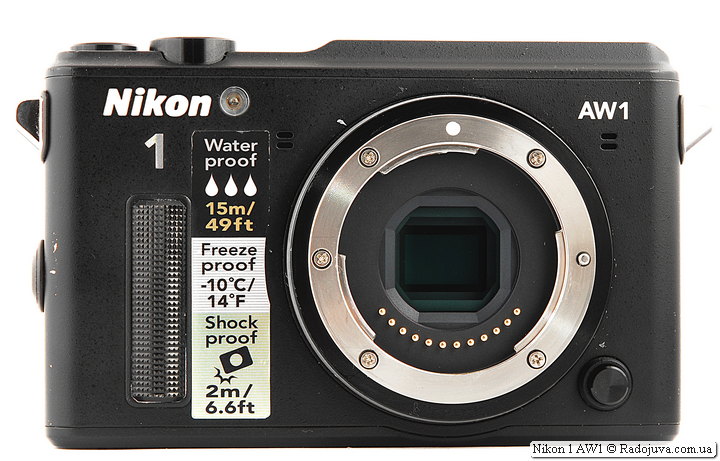
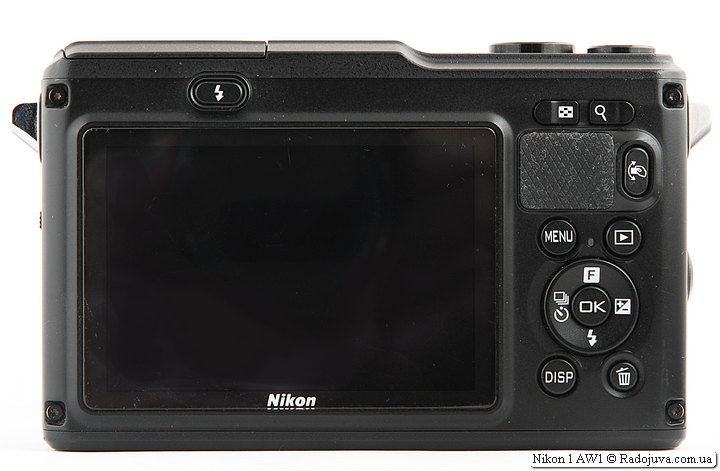
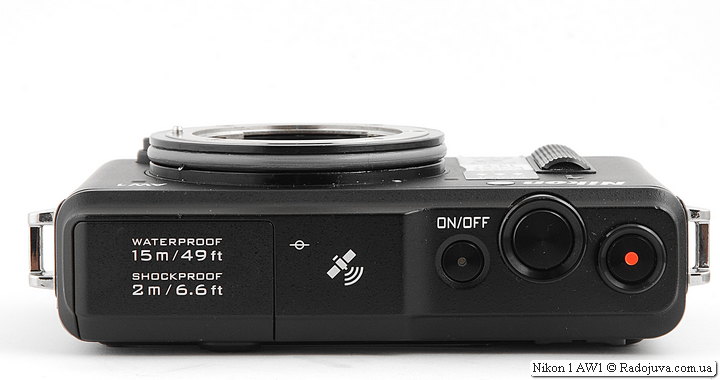

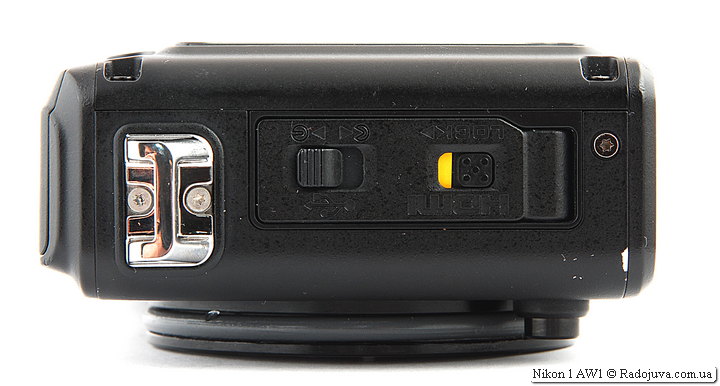
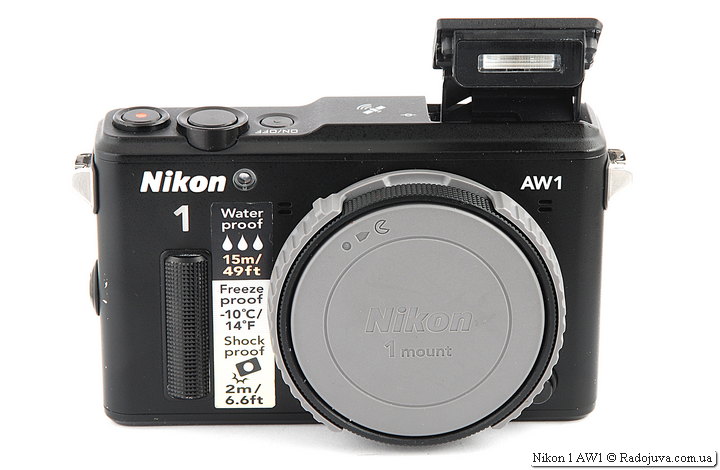
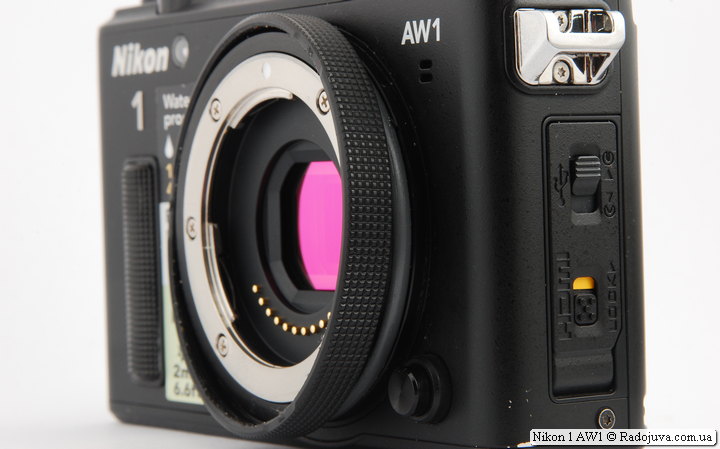
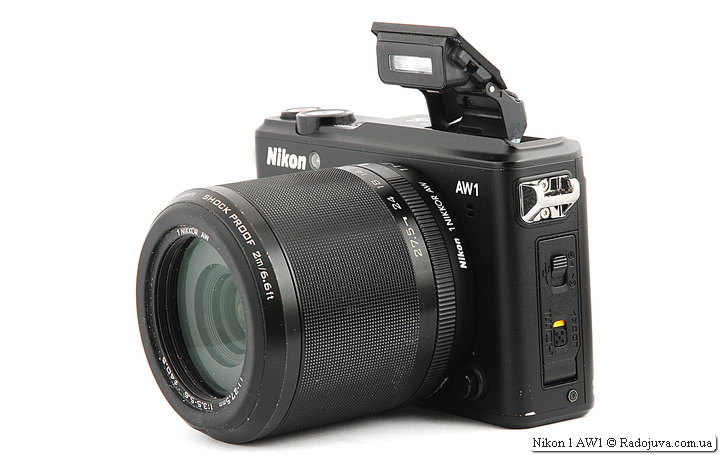















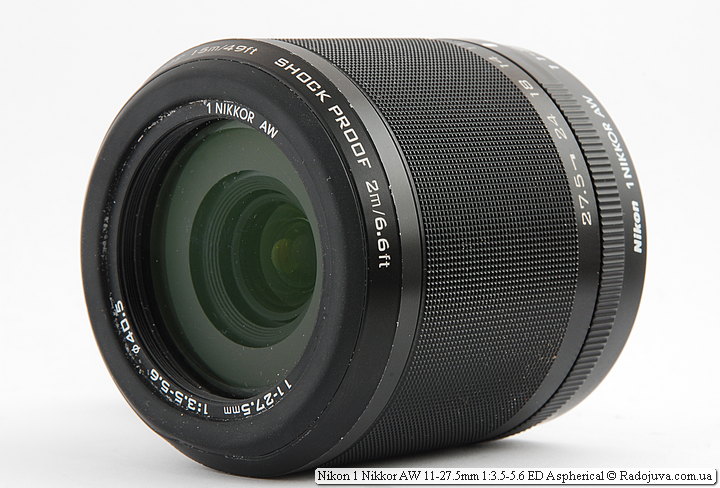

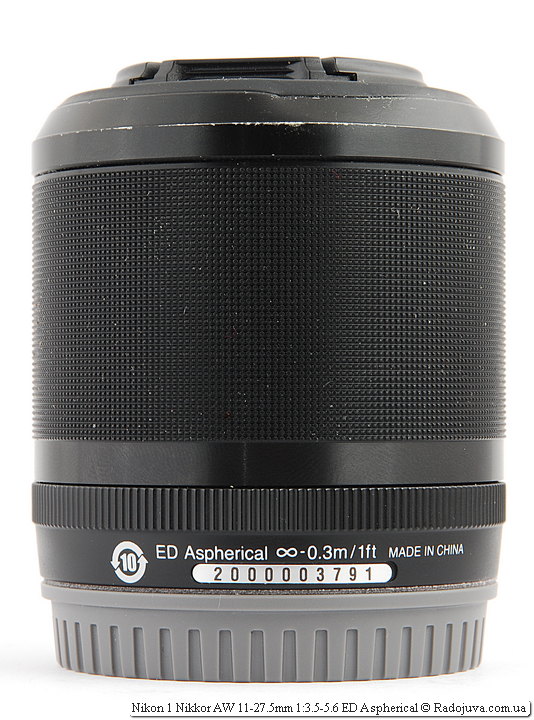
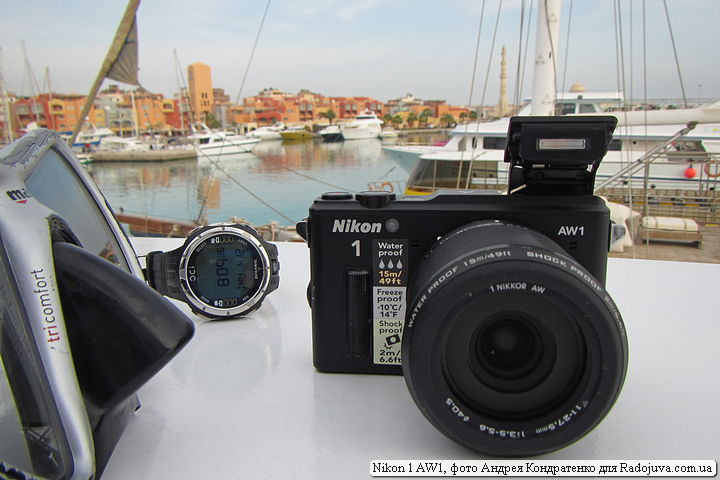








































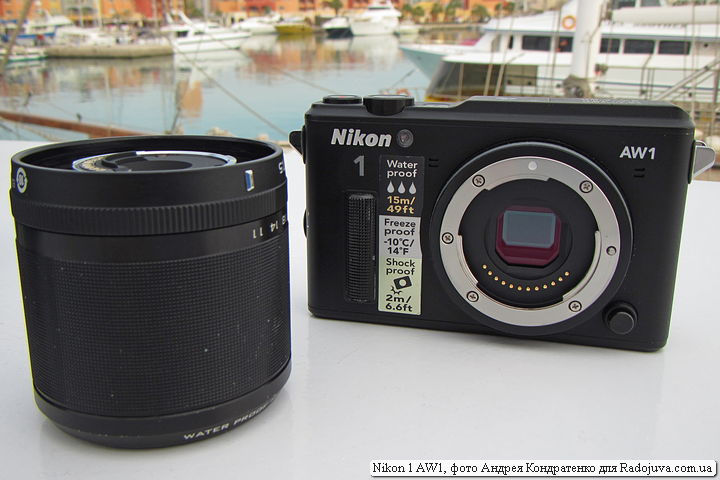

It's funny. Probably, we can expect in the future a white balan - "under water"
So the "Underwater" mode is. But like all the preset ones, it shoots only in JPEG, in fact, adding the red spectrum nicely. And it is not realistic to set the white balance under water. Too many factors - depth, visibility, sun exposure, etc.
Thanks for the great review!
I would like to add on my own: I am engaged in the repair of digital media, once a Panasonic Lumix DMC-FT3 camera came for repair. It looks quite menacing, and is declared as waterproof. But, unfortunately, it was flooded with salt water, which leads to reflection. I do not want to throw a stone in the Panasonic garden, because it is not known for certain what the owner did with the camera, but the fact itself is remarkable.
Better not in a towel, but in a cup of rice.
I wanted to write a lot, but I rubbed everything. Better to put it simply - Must Die.
Was a waterproof soap dish Fuji XP30 on the third dive made it live. It is possible that “Even the smallest grain of sand can break the tightness of the chamber, and then the service will no longer help you)”, he would only take a completely sealed apparatus, and this, in my opinion, is just throwing money away. If you really mess around, then with a box for a DSLR there the quality will be an order of magnitude better (it is understandable why there is so much work), and here dancing with a tambourine around the device, the main advantage of which should be simplicity, but it was lost on the way, and actually brought in 100% owner's disorder , as this thing will inevitably flood. Although for production the most it is - a quick turnover :)
excellent review, very interesting about this unusual camera ...
I was pleased with the comment about Nikonos, here's what it looks like:
(http://www.ebay.com/itm/1327-Nikon-Nikonos-RS-AF-SLR-Underwater-Film-Camera-body-only-from-Tokyo-/281530881615?pt=Film_Cameras&hash=item418c8c564f)
Good evening to everyone, thanks to Arkady for an interesting review, but I have a very interesting question, not only to Arkady, but to everyone who thinks that a mechanical shutter is better (1/4000 on many cameras, especially crop) than an electronic one that can shoot 1/16000 unnecessary details (that is, an unlimited resource), but no, everything is set exactly on the class above as mechanical, in the net I used to google something but didn’t find anything specific about this. So I'm waiting for your explanation in advance
A voluminous question in one comment is difficult to answer. The network does have useful materials on this subject.
Maybe now something has appeared but a year ago there was nothing intelligible, and you Arkady what do you think about beta in a nutshell
With current technologies for reading a signal with an electronic shutter, you can get a distorted picture of objects in motion, a mechanical shutter is devoid of such a drawback (except for ordinary parallax). + There are rumors about problems when working with electronic shutter flashes.
The electronic shutter speed is not yet enough for normal shooting. the mechanics are at their best.
Tesla in his experiments used mechanical generators to create nanosecond pulses. Until now, no one can repeat electronically.
found here it is described in detail
http://engineerfilippov.blogspot.com/2013/03/blog-post_28.html
In short, the electronic shutter on CMOS matrices leads to the Rolling Shutter effect - stretching of moving objects due to the progressive exposure of the matrix, exposure occurs in turn from top to bottom and at the same time very, very slowly, the object has time to shift and significantly distort. The mechanical shutter (or rather shooting with it) is devoid of this drawback.
This disadvantage is often said by users of the Panasonic G6. Big minus.
The general impression is very good, such a whole "armor-piercing" camera. Most likely this camera has a common "stuffing" with the Nikon 1 J3. In terms of technical parameters, apart from protective ones, Nikon 1 J3 and Nikon 1 AW1 practically do not differ, only you will have to pay about 200 USD for protection.
Malyaev is right. The CX format has no right to exist. I don't quite understand what Nikon is trying to achieve by releasing cameras with such a sensor. As I understand it, releasing this shame, they proceed from approximately the same considerations as the authors of the Chinese horror “polo d3000” (nicknamed “sharp shots”), namely, “bomb suckers”. It is high time to understand to comrades from Nikonab that “We are not fuckers, we are not fuckers”!
You look from another holocaust, with this logic, any soap dishes with a small sensor are not entitled to exist. Despite the clumsiness of the system, it has some goodies that please some users.
Soap dishes are at least compact, but here attach any more or less sensible lens and you will get almost a DSLR in size, which still has a small matrix ...
Arkady, I can probably be wrong, but it seems to me that there is an error "A1600 (160-800)"
Fixed
“But even the expensive Nikon D4s has a temperature regime of only 0 to + 40 ° C.”
My Canon 7D worked at -20 for several hours with no problems and consequences. Of the phenomena in the process of shooting, only the braking of the LCD screen.
The question is not how long the camera will work, but what is the warranty, because your 7d has the same operating temperature range: 0 ° C - 40 ° C, don't believe me, look at the instructions.
And to whom, under water, did you show the flag of a non-existent country?
octopus, crabs .. ?? ))))
The question is certainly not for me, but any such offtopic entails ban_set.
Disrespectful attitude to the neighboring state (as well as its flag), not an indicator of wit or a subtle sense of humor. The flag is always taken on an extreme dive on the last day, a tradition like this.
Extreme immersion, and the last day? How so? Inconsistently like that ..
Yes, you can take at least 10 flags, it's your business. But leave the photos with you ... Here we are talking about photographic equipment, but “in the light of recent events” IT looks like a “political action” on Radozhiv ... don't be surprised if someone is already allergic to this flag and changes his mind about being dumped on the trail. the camera is happy ...
Flame
I can't find the link :(, but recently I came across a camera for underwater photography, designed for a one-time dive ...
Disposable? is it like - in brick mode? :)
We shoot until the film runs out (or the film runs out), after shooting, carefully cut it with a hacksaw around the perimeter, take out the card or film, and discard the "shells". :)
not 30 milliseconds, but 300, or 1/3 of a second, please correct
Overview: http://www.ixbt.com/digimage/nikon1-aw1-predtest.shtml
It’s better to take a SLR and a similar aquabox http://market.yandex.ru/model.xml?modelid=6934369&hid=90616&show-uid=710313714186986628&track=mdlimg&track=mdlttl
PS. The mirror can withstand splashes, frost (if it is not allowed to cool completely and then slowly warm up) and other burdens. And how often do we want to dive with a camera into a body of water on the territory of “this country” ...
I think that most owners of this camera will buy it "for the summer to play". For underwater photography, there is a much more serious technique. And so, there would be an APS-C sensor, "bought". And with this, I don't want to.
I will still try to sort out my previous statement “on the shelves”.
What could be the scope of this camera?
1. Very amateur hiking.
2. Very amateur underwater shooting.
Why not professional or just not amateur? There is a crop factor of 2.7, and a very small number of functions for use as a camera for an advanced amateur, and an extremely insufficient number of “native” optics, the difficulty or impossibility of using professional optics, and the available optics are of low quality.
Why only two areas of application? Yes, because for other areas you can find options much better and better for every taste and budget.
Now let's take a hiking shot. On the one hand, it is convenient not to worry too much about the safety of the camera, on the other hand, to worry about a thing that costs from 26 tr. you will still be. Then hikes and travels - this is the likelihood of getting very valuable and rare frames, which you don't want to lose because of the imperfection of the camera, and even what happened - you want normal quality, and not throw 3/4 of the images into the basket. If we exclude the possibility of banging the camera against something, that is, there are many dust-and-moisture-resistant versions of Nikon, Canon, Pentax, Sony - which will withstand rain and frost with appropriate glasses - the options are much better in quality and convenience in this vein than Nikon AW1. As an option - take something inexpensive and difficult to kill with you, which is not a pity to sacrifice in case of something.
We got to underwater shooting. These are always poor lighting conditions, which affects both noise and focusing stability. Nikon AW1 with its small sensor and simple focusing system is suitable as a replacement for a soap dish, nothing more (only the price is much higher). Cameras with an APS sensor or at least APS-C will steer underwater. Higher light sensitivity, better DD and better color rendering, faster and more accurate AF. The better and more expensive the equipment, the more sorry it is to fill it with water, which can easily happen to the Nikon AW1. Here, boxes are preferable, since even if water begins to ooze, it is easy to control visually and emerge in time. Here IMHO even Sony NEX with a branded box will be better and not much more expensive. Considering that diving is a very expensive pleasure, it would be wise to spend money on an aqua box for a DSLR. And the cost of good underwater light somehow does not correspond to the Nikon AW1 class, and without it, normal pictures will not work.
If I was a lover of hiking and diving, and I needed something compact, then I would take the Sony NEX-5 and the box for it - for the price / features, very reasonable IMHO. If you have money, then Sony A7 with box. If you already have a normal SLR with glass, then buy a box for it. And I wouldn't sacrifice frames using a castrated Nikon AW1.
You write the right things, but you forget the key things. When it comes to “hiking shooting”, then every kilogram counts. And if you are not a professional who expects to make money selling photos after a hike, or an amateur who is VERY confused by the quality of the picture, then lugging 3-4 kg of excess iron with you will hardly be skillful. When it comes to "underwater photography", then everything is even sadder. Sony A7 with box - here (http://www.ebay.com/itm/Nauticam-NA-A7-Waterproof-Housing-Underwater-Camera-Case-for-Sony-A7-/281498072447?pt=US_Camera_Underwater_Housings&hash=item418a97b57f) the price of a normal underwater box, you can also find there under the NEX (from $ 1800). Yes, and this is not the end of the story ... more optical protection is needed. And it weighs (without additional boxes for optics) - 2,33 kg. Total, again, 4-5 kg of excess weight. And that's extra !! diving equipment that is not light (mine weighed 23 kg). I agree that the camera is noisy at high ISOs, and underwater the ISO was automatically “screwed” to maximum and the camera often slowed the shutter speed too much. But I disagree with the fact that it is easy to drown the camera. I had the opportunity to make fun of her ... 4 dives a day, twice a day it had to be desalinated, dried and charged. Here the whole question is in your scrupulousness. And by the way, I want to see how you will emerge VERY quickly when you see a leak in a box (barotrauma, lung rupture are real possible consequences). There is nothing even to compare with “soap boxes” ... the group included GoPro 3 and Canon D30 for comparison ... this is a completely different level of technology (Nikon has a larger matrix, shooting in RAW). My opinion is Nikon is on the right track. The overwhelming majority of buyers in the amateur segment will not bother with photo post-processing and meticulous comparison of details, at most a small lesson from the Internet on “how to stretch an underwater photo”. And you can really pull it out, it's not a JPEG from a soap dish. Here the whole question is - what do you expect from the camera, and are you ready to spend thousands of dollars and carry + 3-5 kg of excess weight for the sake of a better picture. Believe me, not everyone is ready.
Something I do not quite understand you. You give links to some expensive deep-sea boxes up to 100 meters (by the way, there is much cheaper, we don’t fuck one), you talk about the difficulty of surfacing, about a ruptured lungs, etc. - and this is with the maximum depth stated in the article up to 15 meters! Up to 15 meters I have a friend and without scuba dives easily when hunting. Further, I understood from your practice that you risked sinking deeper with the device - but this is already at the expense of the guarantee and anything could happen - from a leak to a deformation. Then you say that pouring is not easy - but I would say that “until the first grain of sand” or some other accident, and then it will be possible to notice only when “the patient is rather dead”. Well, the mentioned additional box for AW1 is a completely different song, which I am talking about. Again, this box is up to 40 meters, not up to 100.
Arkady, thanks for the review! The device, in any case, has the right to life. Sorry for the off-top :) Alexander, diving without scuba and scuba diving to 15 meters are two big differences. Scuba diving supplies air to the lungs under pressure, the deeper the depth, the higher the pressure - otherwise it will not be possible to inhale, this is physics :) Therefore, a sharp rise, even from 15 meters, can lead to rupture of the lungs.
In general, this camera will definitely find its buyer, just like the Polo D3000, but it will be just a very highly specialized, specific and unpopular product. For several hundred (if not thousands) of DSLRs sold, Nikon will sell one Nikon AW1. In the end, the direction will be recognized as non-marginal, and Nikon will cover it in the same way as other mega-brands do now. That's why Must Die said.
PS Would make better affordable aqua boxes for DSLRs - is it really more difficult and more expensive than making a carcass?
3-4 kg? This is what you need to take with you and why? If you prove to everyone that you are really cool ... But, like, they go hiking with a different purpose or no longer?
It was possible to drown the Canon d5 mark 1, although 2, of course, is much more serious and there is something to tell about ... After all, the camera is something to grow, snorkel with it or swim in a kayak there, sand gets in and hello, but dive into the Mariana Trench ...
I don't understand the point of buying a cheap underwater box. Do you think he is reliable? Buying expensive equipment (you wrote about the A7) is stupid to save on boxing. Regarding the "leakage", I'm talking about diving 30 meters + (what does this have to do with friends hunting at shallow depths). It happened by chance to go lower (up to 23 m), but understanding the manufacturer's precautions, I didn't worry about the safety of the camera up to 20 meters. Again, if you are in the know, then over 40 meters is already technical diving (not mass diving). For AMATEUR (cameras and dives), 40 meters is the limit.
About scribbles - these are warnings from my own experience. They also drowned the 5D mark2 out of stupidity, inattentively checking the box ... and no one began to surface VERY quickly with it from 30 meters, understanding the consequences.
And to dot the point .... this is an amateur camera. And reading the comments that “it's better to buy an A7 with boxing”, I understand that we are moving into the plane of choice between Lada and Porsch ... different tasks, requirements, prices, etc.
While the direction is not the most marginal. But the mirrorless is the future. And Nikon, like Canon, being the market leaders themselves understand this. What they are doing now, I am sure, is testing technologies and probing the market.
yeah .. and there was a future behind rangefinders, yeah ... then I watch film SLRs all died))
Andryukha, respect. I read your comments and realized that I was wrong - I myself have been diving in the past and I understand well what I mean. The deceased pyadvak is insanely sorry, but I would not make an emergency ascent because of this. For such purposes, it turns out that this CX is quite capable.
Of course it will. For Cousteau, I would not have pulled it, there needs a different quality, there are other goals. And for yourself and your friends “as a keepsake” - more than enough. And if you spend a little time and stretch the photo, you will have a good result. And yes, the top five was insanely sorry even for me ... although it was not mine) ... and only a madman will do an emergency ascent, treatment is much more expensive than a nickel.
Mirrorless users are reminiscent of sectarians, everyone repeats their mantras about the future, especially the adherents of Sonya are especially struck by this.
Hehe ... Hope dies last.
The design of the camera is such that after using it in water, you need to open the flash and pour water from the flash compartment, which can accumulate there, after reading the review, I correctly understood.
You don't need to pour anything) There are no large containers ... the main thing is to desalinate after immersion, so as not to clog.
If we got to the bottom of the crop factor ... it would have been hands, as they say)) Arkady seems to have an excellent photo of an old non-autofocus nokia in the storeroom :) And the idea is really great. Let's leave the choice of a professional tool to the professionals themselves;)
Matrix size is HUGE. Starting from corny DOF, to bokeh and noise. Physics can not be fooled either by noise reduction or by a more advanced processor. So everyone is noisy - “why use such a matrix”. APS-C is not enough for me to shoot at night. I want FX.
“There seems to be an excellent photo of an old non-autofocus nokia in the storeroom” - a winter landscape in which there is no abundance of small details and excellent lighting? :)
I noticed for a long time that there are situations in which even the crappy camera will give a normal result - just very good conditions for shooting. But this does not mean that the same damn camera can get a normal result under other, more difficult conditions. For example, I often had to take pictures with a mobile phone camera, and a very mediocre camera - well, if the scene is static, the lack of dynamic range can be compensated for by HDR. But then it is very difficult to bring the disgusting color rendition to something normal, and the noise climbs with might and main. And if the scene is dynamic - at least hang yourself, but in the bright sun you will get dips in the shadows / overexposed sky, plus distortions from the Rolling-shutter, when a moving object breaks, and no editors can fix this. I am already silent about shooting in low light and night shooting, which are technically inaccessible to primitive cameras.
So hands with hands, and if the technique is worthless (I don't mean the monitored Nikon now) - nothing will work.
"The only thing that confuses me a little is the lack of seals in the compartment from which the frog flash jumps out ..."
Because the flash can be used underwater, the flash itself is hermetically sealed, which means that the compartment does not need to be sealed. The sealing was made “deeper”, at the place where the frog was docked with the body.
Please correct the inaccuracy regarding AW1. I use the optics of PENTACON auto 2.8 / 135 MC, Helios 44M and a pair of home-made lenses from film projectors. The truth is that when the lens is detached, the device starts to panic, they say you need a lens to shoot ... But, in the "creative" mode, everything works fine on the manual settings. From the electronics side there are no clues, so shooting is difficult. This is especially true for focusing. Therefore, I shoot in the mode of 5 frames per second with a slight adjustment of focus in the course of shooting. Of course, the expocouple is manually set, although when recording a video the device does this automatically and even tells you when the faces are in focus. At the same time, in the video recording mode, you can take 20 pictures - not rationally in terms of charge consumption, memory and matrix resource, but - as an option.
I support the previous speaker. Joined by Helios 44-2. Everything works in M mode. I also noticed: in mode A, for example, the camera measures the exposure, although the swearing “check the lens” is lit on the whole screen and you cannot take a picture. You twist the aperture on the lens, and the camera tells you the shutter speed. Then you go back to M, you expose and shoot this shutter speed. :-) So it's not all bad with the Nikon 1.